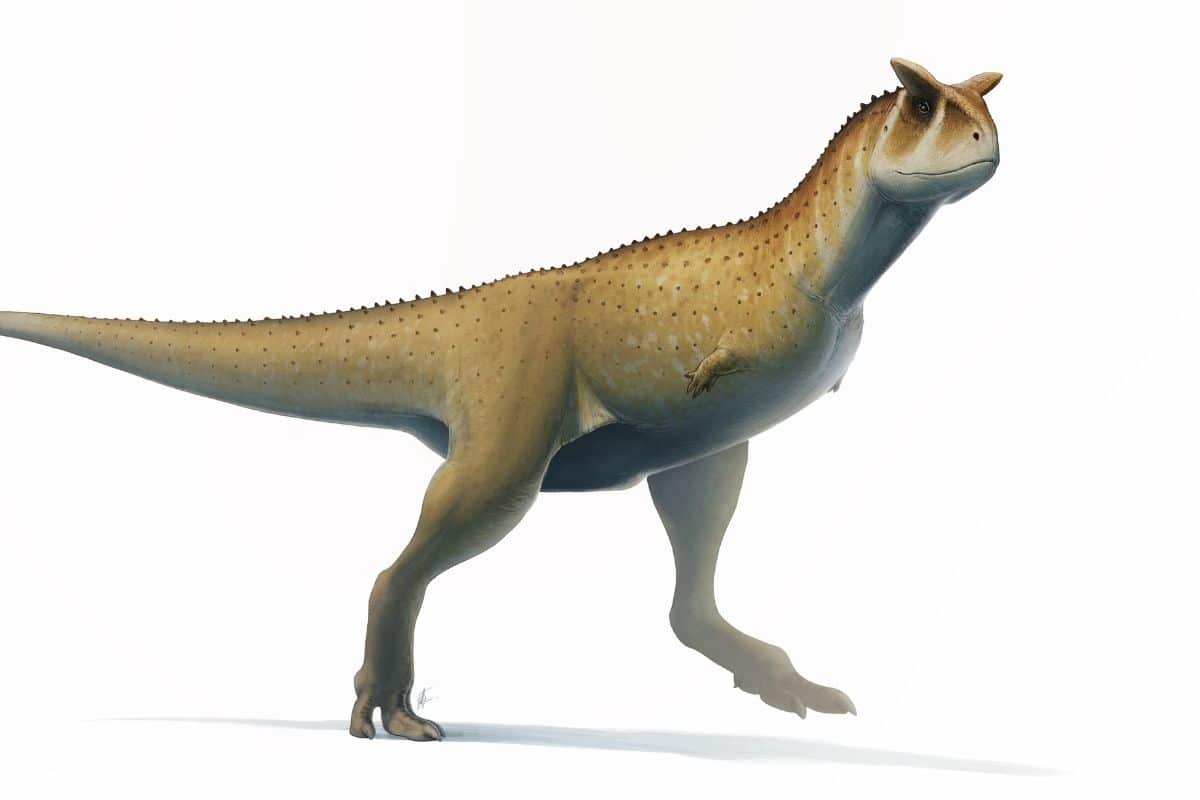
The beast may even be closely related to the ancestors of all Abelisauridae: dinosaurs with arms so short that they were essentially useless.
The fossilized remains of the dinosaur have been found in northern Argentina. There they were encased in rocks that are between 75 and 65 million years old. It means that the dinosaur lived in the period shortly before the asteroid impact that led to the extinction of all dinosaurs. Research into the fossil remains – consisting of the skull of the dinosaur – shows that it is a species unknown to us until recently. Scientists have named this one Guemesia ochoai datum.
special
Now dinosaur remains are regularly found. And very regularly those dinosaurs appear to belong to species unknown to us. However, the discovery of G. ochoai special. The dinosaur belongs to the Abelisauridae: a group of dinosaurs with very short and therefore almost useless arms.
Related to the ancestors?
The researchers infer this from various properties that G. ochoai with other dinosaurs belonging to the Abelisauridae. But at the same time, there are also properties that the researchers can place more difficult. so missing G. ochoai for example the horns that we do see in other Abelisauridae. It could indicate that the dinosaur is closely related to the ancestors of the other Abelisauridae, the researchers say.
A youngster?
What is also striking is that the skull is very small. Much smaller than others, on G. ochoai related armless dinosaurs. Possibly we are dealing here with a still young, immature specimen. But that is not certain at the moment.

Possibly G. ochoai closely resembled this relative: Carnotaurus sastrei. Image: Fred Wierum (via Wikimedia Commons†
In the north
What is certain, based on the location, is that this dinosaur lived in northern Argentina. And that is an important observation. Because quite a few armless dinosaurs have already been found in Argentina, but by far the most were discovered in Patagonia (southern Argentina). Of G. ochoai a very special armless dinosaur has now been found that roamed just in the north of Argentina. “This new dinosaur is quite unusual,” said researcher Anjali Goswami. “The dinosaur has some important features that indicate it is a new species and provides us with new information about a part of the world we don’t know much about. It shows that the dinosaurs that lived in this region were very different from those in other parts of Argentina (…) and it also shows that there is still a lot to discover in areas that don’t get as much attention as the better-known fossil sites.”
With the discovery of G. ochoai The evidence that northwestern Argentina tens of millions of years ago harbored species found nowhere else in the world continues to pile up. For example, remains of gigantic turtles (with a shell longer than 2 meters) have been found in the past.
At the same time, the finding of G. ochoai also raises many questions, for example about the place it occupies in the family tree of the Abelisauridae. The researchers hope to be able to provide more clarity about this in the future; they intend to return to the site of the newest armless dinosaur species and hope to have their congeners and relatives there G. ochoai to encounter. Other finds from the same time – the period around the asteroid impact – are also very welcome. In this way, an image can be obtained of what the ecosystem looked like shortly before the impact that killed all dinosaurs and many other species and how the ecosystem changed as a result of the impact.
Source material:
†New armless abelisaur dinosaur species discovered in Argentina” – Natural History Museum
The image at the top of this article: Fred Wierum (via Wikimedia Commons†